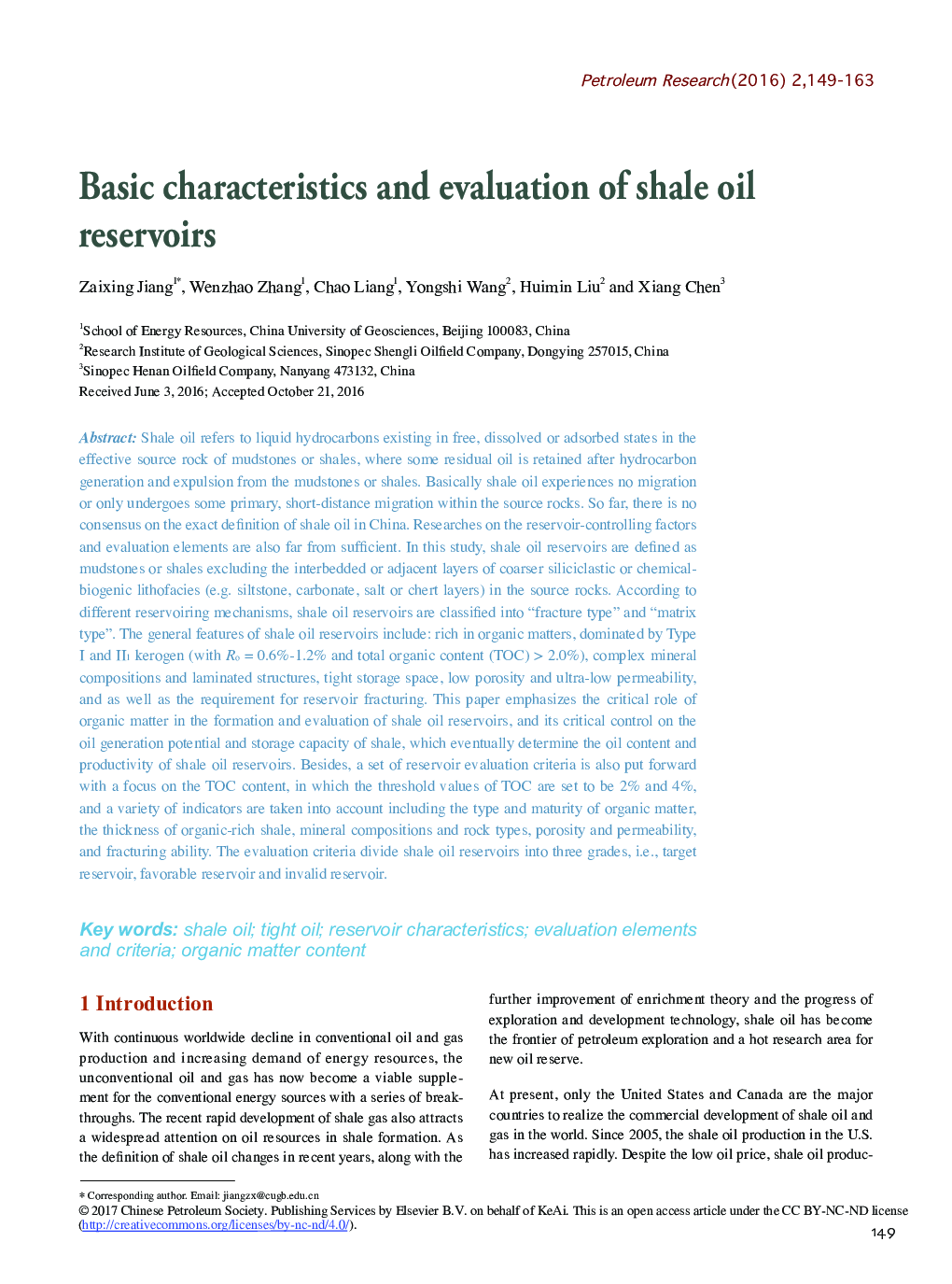| کد مقاله | کد نشریه | سال انتشار | مقاله انگلیسی | نسخه تمام متن |
|---|---|---|---|---|
| 10998234 | 1414336 | 2016 | 15 صفحه PDF | دانلود رایگان |
عنوان انگلیسی مقاله ISI
Basic characteristics and evaluation of shale oil reservoirs
ترجمه فارسی عنوان
خصوصیات اساسی و ارزیابی مخازن نفت شیل
دانلود مقاله + سفارش ترجمه
دانلود مقاله ISI انگلیسی
رایگان برای ایرانیان
کلمات کلیدی
نفت شیل، روغن تنگ، خصوصیات مخزن، عناصر ارزیابی و معیارها، محتوای مواد آلی،
موضوعات مرتبط
مهندسی و علوم پایه
علوم زمین و سیارات
زمین شناسی
چکیده انگلیسی
Shale oil refers to liquid hydrocarbons existing in free, dissolved or adsorbed states in the effective source rock of mudstones or shales, where some residual oil is retained after hydrocarbon generation and expulsion from the mudstones or shales. Basically shale oil experiences no migration or only undergoes some primary, short-distance migration within the source rocks. So far, there is no consensus on the exact definition of shale oil in China. Researches on the reservoir-controlling factors and evaluation elements are also far from sufficient. In this study, shale oil reservoirs are defined as mudstones or shales excluding the interbedded or adjacent layers of coarser siliciclastic or chemical-biogenic lithofacies (e.g. siltstone, carbonate, salt or chert layers) in the source rocks. According to different reservoiring mechanisms, shale oil reservoirs are classified into “fracture type” and “matrix type”. The general features of shale oil reservoirs include: rich in organic matters, dominated by Type I and II1 kerogen (with Ro = 0.6%-1.2% and total organic content (TOC) > 2.0%), complex mineral compositions and laminated structures, tight storage space, low porosity and ultra-low permeability, and as well as the requirement for reservoir fracturing. This paper emphasizes the critical role of organic matter in the formation and evaluation of shale oil reservoirs, and its critical control on the oil generation potential and storage capacity of shale, which eventually determine the oil content and productivity of shale oil reservoirs. Besides, a set of reservoir evaluation criteria is also put forward with a focus on the TOC content, in which the threshold values of TOC are set to be 2% and 4%, and a variety of indicators are taken into account including the type and maturity of organic matter, the thickness of organic-rich shale, mineral compositions and rock types, porosity and permeability, and fracturing ability. The evaluation criteria divide shale oil reservoirs into three grades, i.e., target reservoir, favorable reservoir and invalid reservoir.
ناشر
Database: Elsevier - ScienceDirect (ساینس دایرکت)
Journal: Petroleum Research - Volume 1, Issue 2, December 2016, Pages 149-163
Journal: Petroleum Research - Volume 1, Issue 2, December 2016, Pages 149-163
نویسندگان
Zaixing Jiang, Wenzhao Zhang, Chao Liang, Yongshi Wang, Huimin Liu, Xiang Chen,
